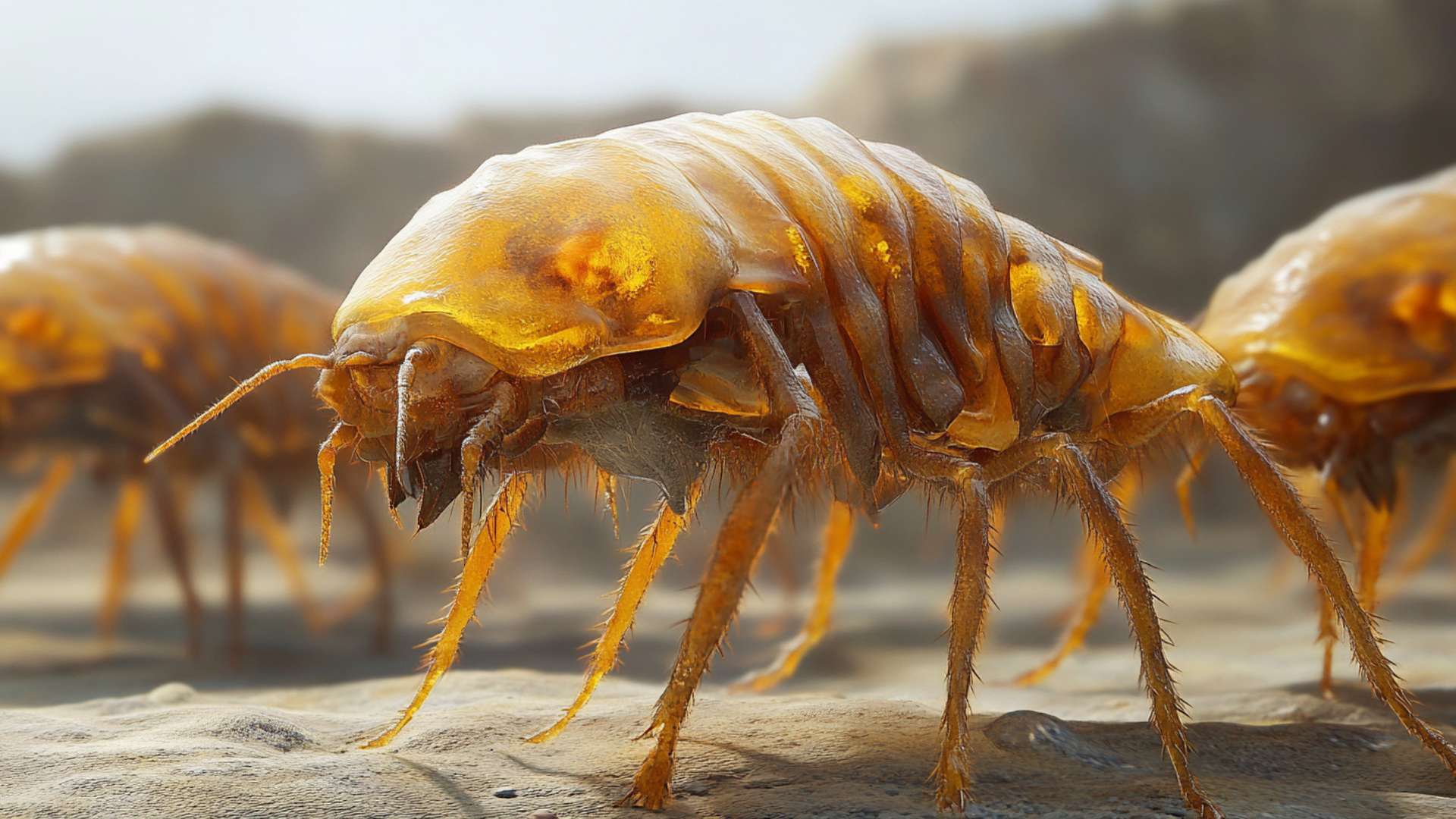As pet and dog owners, we share a deep bond with our four-legged companions. We strive to provide them with love, care, and the best possible life. However, there’s an unseen enemy that can disrupt their happiness: fleas.
These tiny onyx-colored pests have plagued pets and humans alike for centuries. In this guide, we’ll discuss why preventing fleas is important. We will also address common misconceptions about these persistent pests.
How to Prevent Fleas on Dogs and Cats: A Comprehensive Guide
Embark on a journey to discover effective strategies on how to prevent fleas on dogs and cats. From choosing the right flea control products to understanding the life cycle of fleas, this guide empowers pet owners with the knowledge to keep their furry friends flea-free. Explore practical tips, such as the proper use of flea collars and topical treatments, ensuring a happy, itch-free life for your pets.
Tips for Regular Pet Grooming to Prevent Fleas: A Grooming Masterclass
Unlock the secrets of maintaining a flea-free environment through tips for regular pet grooming. Dive into a grooming masterclass, learning not only how to groom your pets effectively but also understanding the importance of this routine in preventing fleas. Discover the best grooming tools and practices to keep your pets healthy and flea-resistant.
Creating a Flea Prevention Routine: Building a Shield Against Infestations
Build a shield against flea infestations by creating a flea prevention routine. Explore the step-by-step process of establishing a routine that incorporates various preventive measures. From environmental control to choosing the right flea prevention products, this guide provides a comprehensive approach to safeguarding your home and pets from the nuisance of fleas.
Flea Prevention During Travel and Outdoor Activities: Enjoying Flea-Free Adventures
Plan your pet’s adventures without the worry of fleas by implementing effective flea prevention during travel and outdoor activities. Discover travel-friendly flea prevention tips and tricks, ensuring your pets can explore the great outdoors without bringing unwelcome guests home. From portable flea control products to outdoor grooming practices, this guide is your companion in flea-free adventures.
Importance of Regular Veterinary Check-ups for Flea Prevention: A Health Assurance
Delve into the importance of regular veterinary check-ups for flea prevention. Understand how regular visits to the vet contribute to overall flea prevention strategies. From health assessments to customized prevention plans, veterinarians play a crucial role in ensuring the well-being of your pets. Learn how these check-ups form an integral part of a holistic approach to flea prevention.
The Importance of Flea Prevention for Pet Owners
Preventing fleas is a must for responsible pet owners. Despite their small size, fleas can harm our pets’ health and well-being. Fleas are carriers of diseases that can affect both animals and humans.
Fleas carry harmful pathogens like tapeworms and Bartonella, causing cat-scratch disease. Untreated flea infestations can cause various health issues in pets.
Pets may experience itching, scratching, and hair loss from flea bites. Anemia can occur due to blood loss, and individuals may have allergic reactions to flea saliva. Preventing fleas on your pet also protects your home.
When fleas invade your home, they multiply in carpets, furniture, and bedding. It’s harder to get rid of a big infestation than preventing it in the first place.
Common Misconceptions about Fleas
When it comes to fleas, misinformation often spreads like wildfire. Let’s debunk a few common misconceptions that can cloud our understanding of these persistent pests.
Myth 1: “Fleas only attack dirty animals.”
Contrary to popular belief, fleas are equal-opportunity offenders. They don’t discriminate between clean and dirty pets; all they need is a warm-blooded host to jump onto. So even if your pet spends more time getting pampered in the doggie spa than frolicking in the dirt, they can still fall victim to fleas.
Myth 2: “Flea infestations only happen during warmer months.”
Fleas love warmth and humidity, and even heated homes are perfect for them. They can easily reproduce indoors, so stay vigilant all year round.
Myth 3: “If my pet doesn’t scratch, they don’t have fleas.” Not all pets exhibit obvious signs of flea infestation through incessant scratching.
Some animals may not react strongly to flea bites. It’s important to use preventive measures regularly, even if your pet doesn’t show obvious signs, to keep them protected.
Understanding flea prevention is key to protecting our pets. Let’s explore effective methods to combat these pests and ensure our furry friends stay happy and healthy.
Overview of the Flea Life Cycle
Fleas, those annoying bugs that make our pets itch, have a fascinating life cycle. To effectively combat these tiny nuisances, it’s important to understand their life cycle.
The flea life cycle consists of four main stages: egg, larva, pupa, and adult. It all begins when an adult female flea lays her eggs on a host animal, typically dogs or cats.
These eggs are extremely small and can easily go unnoticed in your pet’s fur or around your home. Within a few days, the eggs hatch into larvae.
These larvae are blind and avoid light by hiding in dark places such as carpets, bedding, or cracks in the floor. After a few weeks of feeding on organic matter, the larvae spin cocoons to enter the pupal stage.
This cocoon protects the developing flea as it undergoes metamorphosis. The time spent in this stage varies based on environmental conditions. Factors include temperature and humidity. This stage can range from days to several months.
When conditions are good, like warm weather or sensing vibrations, adult fleas come out of their cocoons to find a host for a blood meal. They latch onto their victim, often our pets, using special mouthparts to pierce the skin and feed on blood.
Identification and Characteristics of Fleas
Identifying these minuscule troublemakers is essential for effective flea prevention for pet owners. Adult fleas are wingless insects that measure about 1-4 millimeters long. They have flat bodies with hard plates called sclerite. This ultimately protects them from being crushed by your fingertips.
Their bodies are also adapted for jumping, allowing them to leap many times their size. Fleas are usually reddish-brown in color and have slender, elongated bodies.
Fleas have spines on their legs that face backward, making it hard to dislodge them from their host. These spines also aid in their agility when it comes to navigating through fur or clothing.
To find fleas on your pet, check their fur for small, dark insects. Look for tiny black droppings (flea dirt) or small white eggs on the hair.
Know the flea life cycle and spot them to protect your cats. Stay alert and take steps to prevent these pests.
Signs and Symptoms of Flea Infestation
Fleas, those tiny pests that bother our pets, show up with signs like excessive scratching.
If your pet is scratching or licking a lot, check specific areas like the tail base, abdomen, or ears for fleas.
In addition to scratching, redness may also be observed on your pet’s skin. This redness is often caused by flea bites and can indicate an allergic reaction to flea saliva.
Some pets may even develop small raised bumps called papules or hot spots due to intense itching. Keep an eye out for these signs as they can indicate a flea problem that needs immediate attention.
Indications in the Environment: Flea Dirt and Human Bites
Flea dirt, resembling small black specks, is a sign of fleas in your home. It’s dried blood left by fleas after feeding on your pet.
To check for flea dirt, comb your pet’s fur over a white surface. If you see tiny black specks that turn reddish when wet, it’s time to take action against fleas.
Humans living with feral cats and pets are not spared from their wrath either! Fleas can bite humans too, leaving behind itchy red welts on our skin.
Flea bites often occur on ankles or lower legs but can happen anywhere in contact with infested pets. Unexplained itchy bites strongly indicate fleas in your home.
Flea infestations can be quite bothersome for both pets and their owners. But fear not!
In the next sections, we’ll look at methods to treat and prevent fleas. Early detection is crucial, so watch your pet’s behavior and signs of fleas at home.
Effective Flea Prevention Methods
Topical Treatments: Spot-On Treatments
To prevent fleas, many pet owners prefer spot-on treatments. Apply a small amount directly on your pet’s skin. This is typically applied between the shoulder blades or along the back.
The liquid is then absorbed into their bloodstream and spreads across their body. One advantage of spot-on treatments is their ease of use.
They need little effort and offer lasting protection for weeks. They not only kill adult fleas but also stop flea eggs from hatching. This further prevents larvae from becoming adults, disrupting the flea life cycle.
This approach reduces fleas in your home. Choose trusted brands for spot-on treatments.
Ask your vet for advice on pet products. Try popular brands like Advantage II, Frontline Plus, and Revolution. They’re effective against fleas.
Oral Medications for Flea Prevention
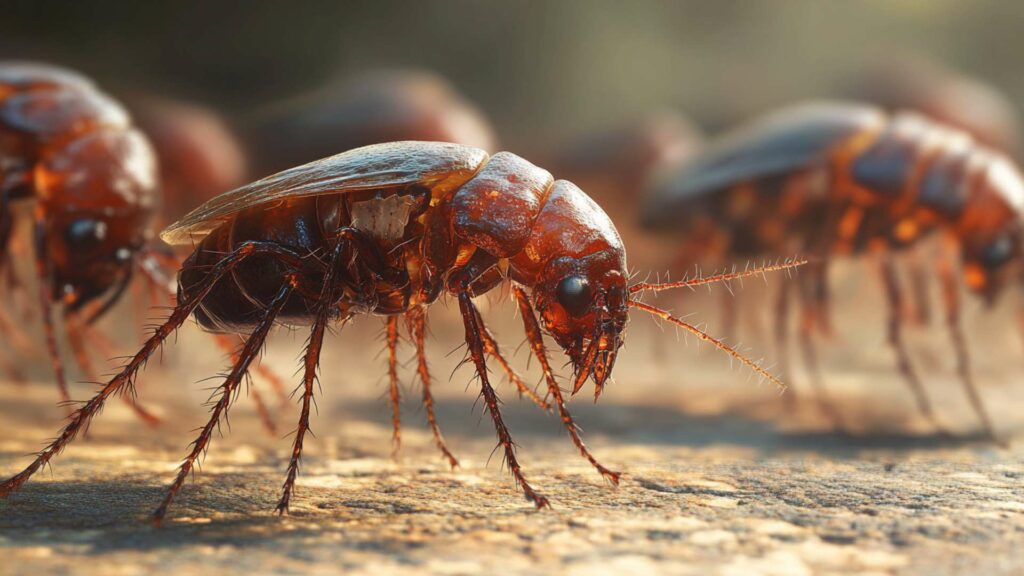
Choose oral medications if you don’t like topical treatments. They come as pills or chewables, easy for your pet to take. Oral meds work throughout your pet’s body to fight fleas.
Once ingested, the active ingredients are distributed throughout your pet’s bloodstream. When a flea bites your pet, it ingests these compounds and subsequently dies.
Some oral meds kill ticks and heartworms, not just fleas. Use them carefully, and know the possible side effects.
Watch out for side effects like vomiting or diarrhea. Ask your vet for the right oral med based on your pet’s age, weight, and health.
Flea Collars: Types and Considerations
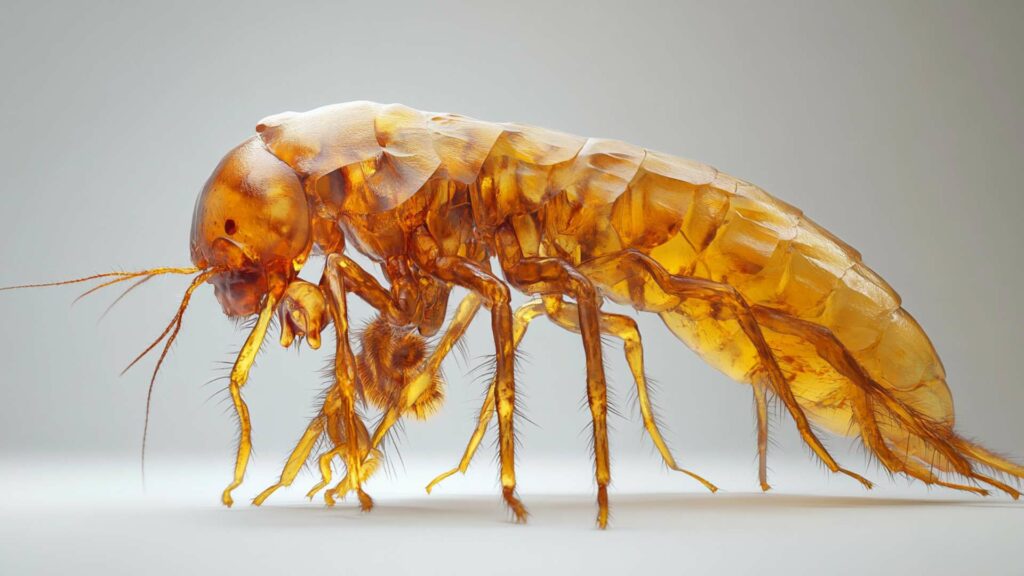
Use flea collars for prevention. They come in chemical or natural forms, releasing ingredients to repel or kill fleas on your pet’s fur and skin.
Chemical flea collars release insecticides over time, protecting against fleas continuously. Some also repel ticks and other pests.
Read instructions carefully for the safe use of chemical collars. Natural flea collars use plant-based ingredients like essential oils known for repellent properties.
Natural flea collars offer an eco-friendly, pesticide-free option. Note that effectiveness may vary based on essential oil concentration.
When thinking about flea collars, consider their pros and cons. They provide longer protection than spot-on or oral treatments, lasting for several months.
Some pets may feel uncomfortable or get skin irritations from the collar. Consult your vet to choose a suitable collar based on your pet’s size, breed, and preferences.
Use spot-on treatments, oral medications, or chosen flea collars to protect your pet from fleas. Consult your vet for the best prevention strategy tailored to your pet’s needs.
Natural Remedies for Flea Prevention
Essential Oils that Repel Fleas: Safely Protecting Your Pets
Use natural remedies like essential oils to protect pets from fleas without harsh chemicals. Be cautious, as not all essential oils are safe for pets.
Safe essential oils like lavender, cedarwood, eucalyptus, and lemongrass can repel fleas. They do so by disrupting their reproduction and survival cycles.
Proper application of essential oils is crucial to ensure your pet’s safety. Before applying essential oils to your pet’s fur, make sure to dilute them with a carrier oil like coconut or olive oil.
This helps prevent any potential skin irritation or allergies. Additionally, never apply essential oils directly onto your pet’s face or near sensitive skin areas such as their eyes or nose.
Home Remedies to Eliminate Fleas: Banishing Those Pesky Pests
If you’re facing a flea infestation in your home, don’t panic – there are several DIY sprays and powders you can make at home using common household ingredients to combat these pests effectively. One effective spray involves mixing equal parts of apple cider vinegar and water in a spray bottle and applying it generously on furniture, carpets, and areas where fleas may hide.
For additional potency, adding a few drops of safe essential oils like tea tree or peppermint can enhance its flea-repellent properties. Powders made from natural substances like diatomaceous earth (DE) can also help eliminate fleas from your home environment.
DE is composed of fossilized remains of tiny organisms called diatoms and works by dehydrating fleas, larvae, and pre-adult fleas. Simply sprinkle the powder onto carpets, floors, and pet bedding, leave it for a few hours, then vacuum thoroughly to remove all the fleas and their eggs.
To maintain a flea-free home, regular washing of pet bedding in hot water is essential. Flea prevention products can be used alongside these home remedies to provide comprehensive protection against these persistent pests.
It’s also crucial to keep your home clean and clutter-free as this reduces potential hiding places for fleas. By adopting these natural home remedies and preventive measures, you’ll create an environment that not only keeps your pets happy but also free from flea infestations.
Environmental Control Measures
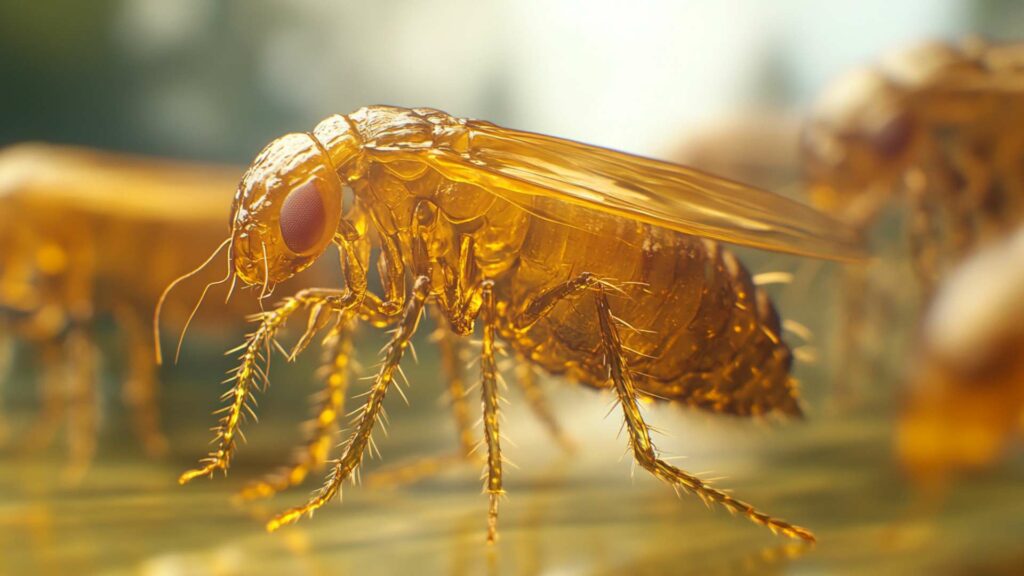
Regular vacuuming to remove eggs and larvae
Keeping your home clean is crucial in the battle against fleas. Regular vacuuming not only removes adult fleas, but also helps eliminate their eggs and larvae hiding in carpets, rugs, furniture, and other surfaces. Make sure to focus on areas where your pets spend most of their time as these are prime spots for flea infestations.
The vibrations from the vacuum can also stimulate dormant fleas, making them more susceptible to treatment. Remember to empty the vacuum bag or canister immediately after each use to further prevent fleas reinfestation.
If you have a serious flea infestation, consider using a specialized flea powder or spray on your carpets or furniture before vacuuming. These products often contain ingredients that kill adult fleas and inhibit the growth of larvae, providing an extra layer of protection against these pesky critters.
Washing pet bedding frequently at high temperatures
Your pet’s bedding is a cozy sanctuary for fleas. To prevent them from multiplying and causing discomfort to your furry friend, it’s essential to wash their bedding regularly. Use hot water (at least 130°F) as high temperatures and warm water effectively kill both adult fleas and their eggs.
Add a mild detergent for thorough cleaning. If your pet’s bed is too large for your washing machine, you can wash it by hand using hot soapy water.
Scrub vigorously to dislodge any flea debris clinging to the fabric fibers. Rinse thoroughly and let it dry in direct sunlight as sunlight aids in killing remaining insects.
Additionally, ensure that you wash any blankets or cushions that your pet frequently uses, as these can also harbor flea eggs or larvae. Maintaining a clean environment for your pet will significantly reduce the risk of reinfestation.
Outdoor maintenance to prevent infestations
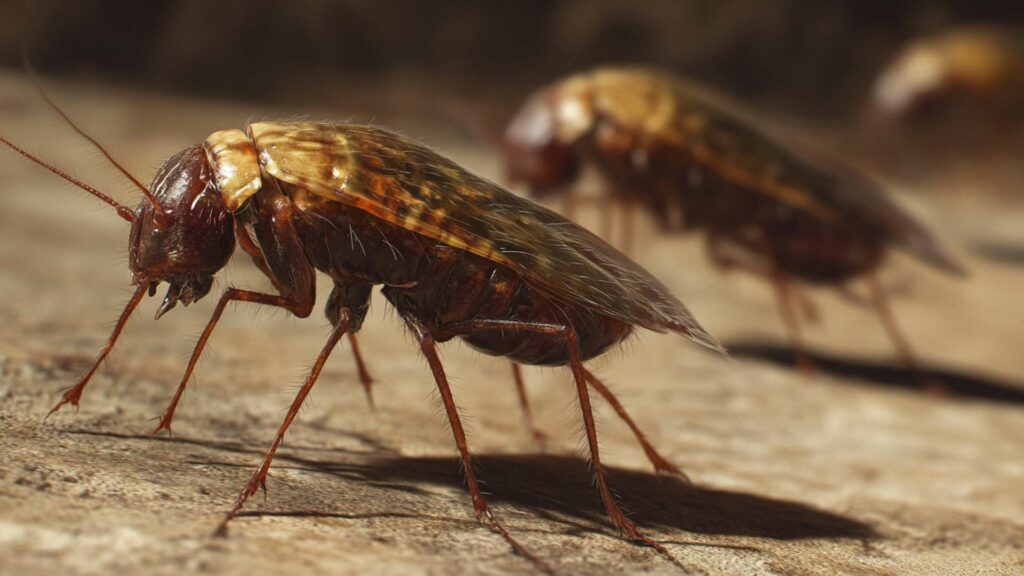
Fleas don’t limit themselves to indoor spaces; they can also lurk in your yard, waiting for their next host. To prevent flea infestations from taking over your outdoor space, there are a few key steps you can take. Regularly mow your lawn and trim any tall grass or vegetation where fleas might hide.
Keep the areas frequented by your pets well-maintained, as fleas love shady and undisturbed spots. Consider using nematodes, which are microscopic organisms that feed on flea larvae present in the soil.
These beneficial organisms are safe for pets and humans but help control the flea and tick populations effectively. If you live in an area with a high incidence of ticks, consider treating your yard with tick products that also repel fleas.
Always follow the instructions provided on these products and consult with a veterinarian if needed. By addressing the outdoor environment, you’ll reduce the chances of your pets bringing uninvited guests into your home.
Remember, preventing fleas is easier than dealing with a full-blown infestation. By implementing these environmental control measures alongside effective flea treatments, you’ll create a comfortable and flea-free environment for both you and your beloved pets!
Treating Flea Infestations
Discovering that your beloved furry companion has fleas can be distressing, but fear not, as there are effective steps you can take to combat this pesky problem. Firstly, isolate your pet from other animals in the house to prevent further infestation.
Next, give them a thorough bath using a gentle flea shampoo specifically designed for pets. This will help your cat get rid of adult fleas present on their fur and provide immediate relief from itching.
While bathing, use a flea comb to remove any remaining fleas or flea dirt present in their coat and carefully dispose of them. Following the bath, it is crucial to treat your home environment.
Wash all bedding and blankets that your pet regularly uses in hot water to kill fleas and any eggs or larvae that may be lurking there. Vacuum all the areas where your pet spends time, paying extra attention to carpets, rugs, and furniture upholstery where fleas tend to hide.
Empty the vacuum cleaner bag or canister immediately after vacuuming and discard it outside of your home. To further eradicate any remaining fleas, consider using an appropriate flea spray or fogger specifically formulated for indoor use.
These products should contain active ingredients that target both adult fleas and their eggs to break the life cycle effectively. Ensure you follow the instructions carefully when using these treatments.
Conclusion
Dealing with a flea infestation can be frustrating for pet owners; however, taking prompt action using proper methods will help you conquer this challenge successfully. Remember that prevention is key when it comes to protecting your pets from future infestations.
By implementing regular preventive measures such as topical treatments or oral medications recommended by your veterinarian along with natural remedies like essential oils or home remedies discussed earlier in this article, you greatly reduce the chance of recurring flea problems. Stay diligent and maintain a clean environment by regularly vacuuming, washing pet bedding, and treating your yard if necessary.
Flea collars can also be an effective tool for long-term prevention. By following these steps and being proactive in flea prevention, you can ensure the well-being of your pets and create a comfortable, flea-free home environment for both them and your family.
So fret not cat fleas, dear pet owners! With the right knowledge and the most effective ways to combat fleas at your disposal, you have everything you need to keep those pesky critters at bay!
Frequently Asked Questions:
The number 1 vet-recommended flea treatment varies, but options include oral medications like Bravecto or topical solutions like Advantage.
To get rid of fleas without harming pets, use pet-safe flea treatments, wash bedding regularly, and maintain a clean environment.
Keeping pets flea-free involves regular grooming, using flea preventives, and maintaining a flea-free living space.
The safest flea prevention methods for pets include vet-recommended flea products and natural options like neem oil or diatomaceous earth.

